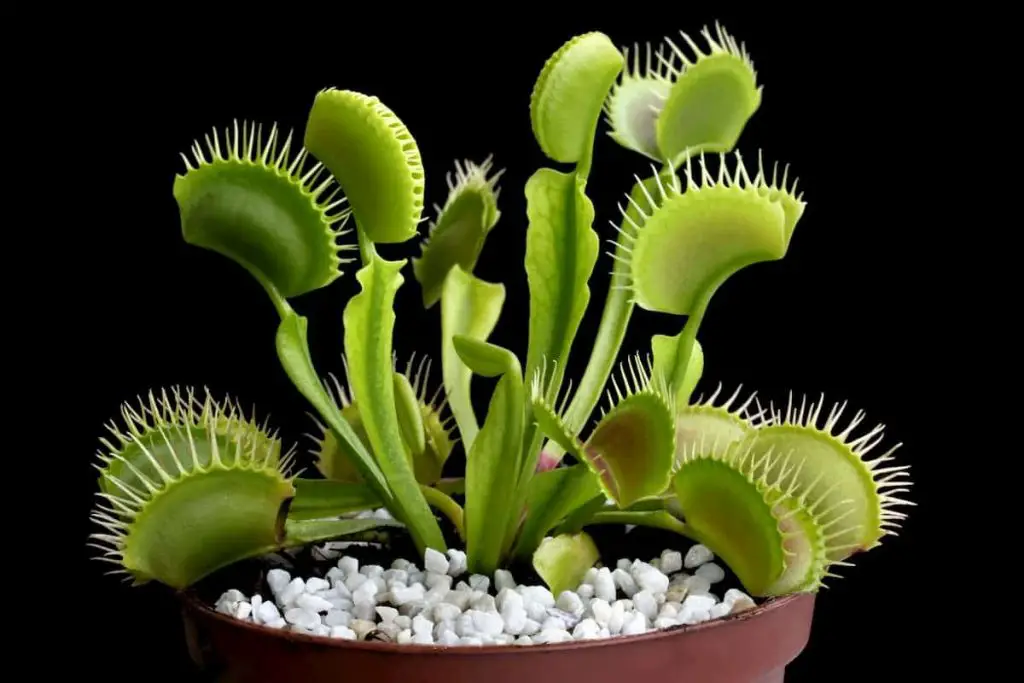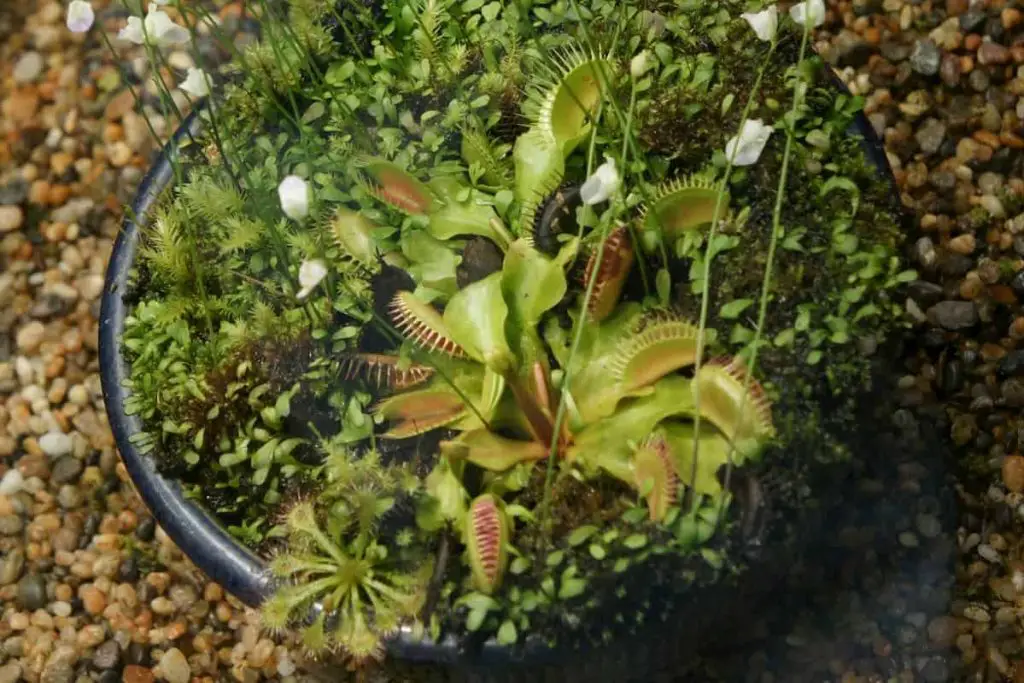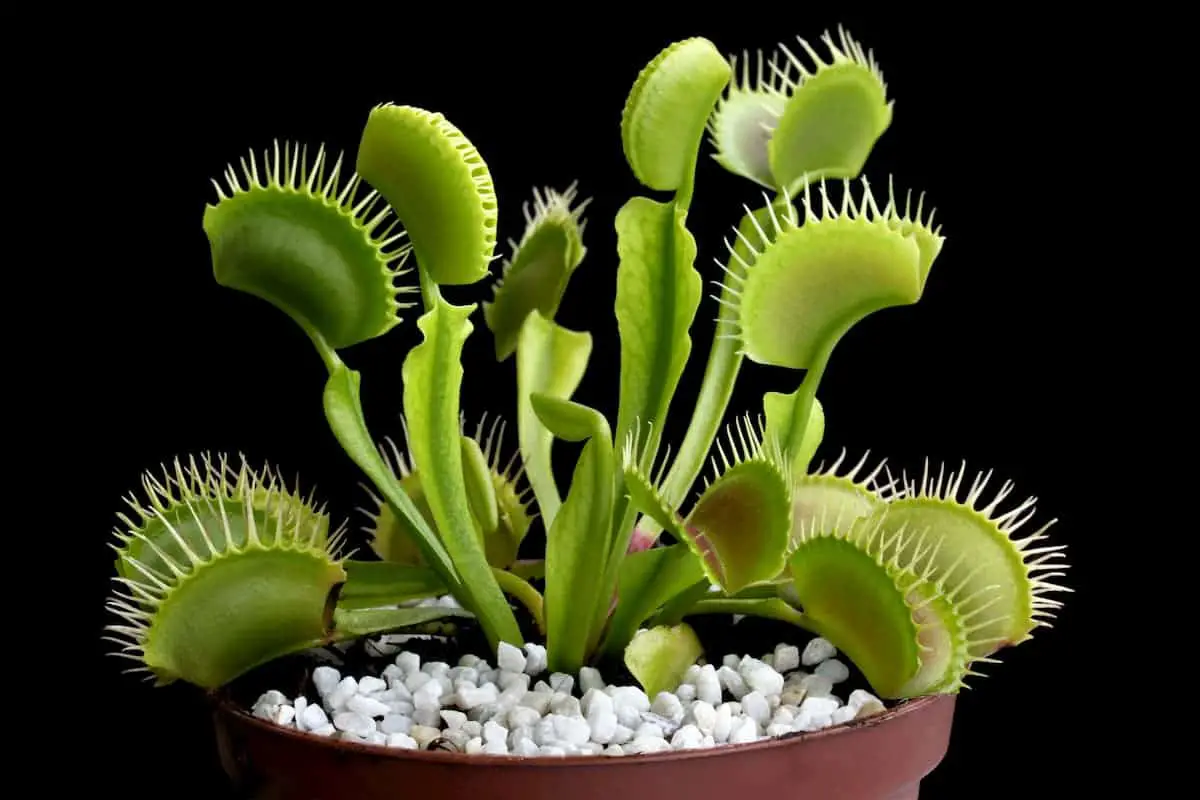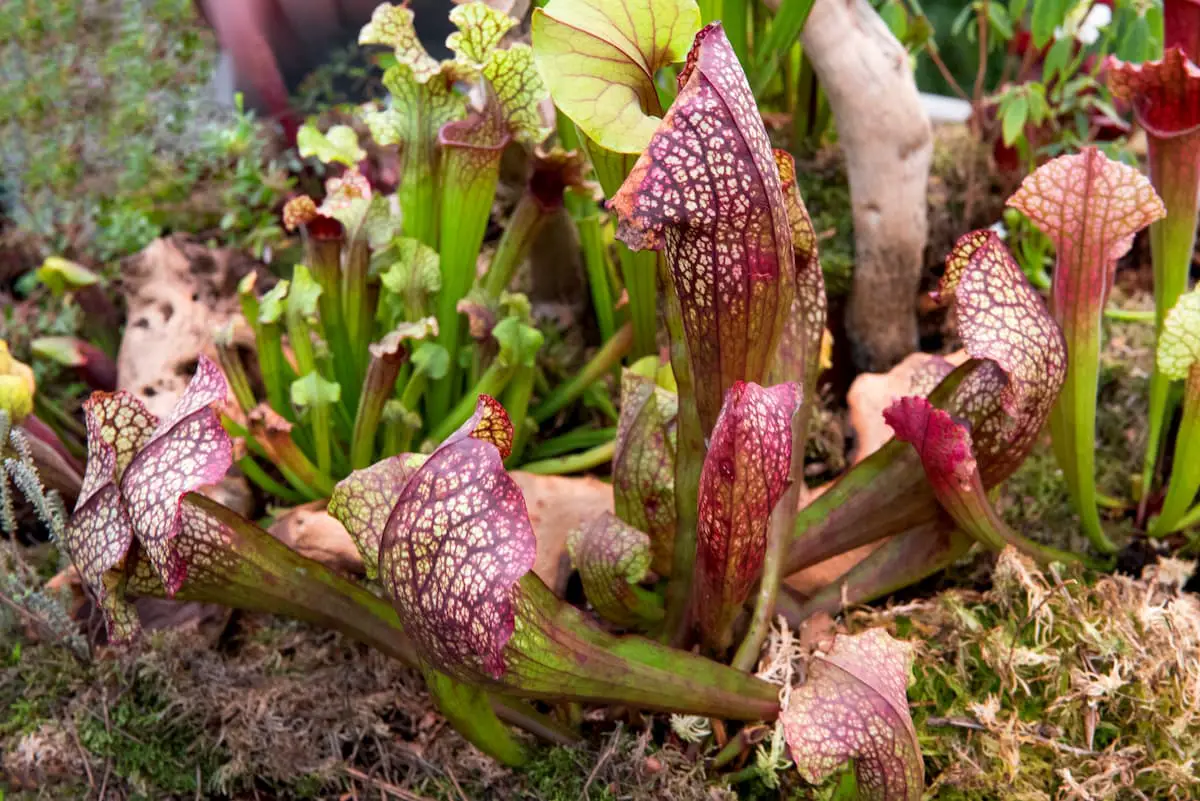Novice gardening enthusiasts often overlook the amount of upkeep Venus Fly Traps need. If you are one of those enthusiasts, it is of no surprise that you have a dried up Venus flytrap in your garden. One of the reasons why this happened is because you don’t know what soil is best for Venus Fly Traps?
Any run of the mill gardening soil won’t do for Venus Fly Traps. The best soil for Venus Fly Traps is nutrient deficient mossy soil. If you want to plant them indoors, you need to make a soil mix consisting of silica sand, perlite and peat moss.
The quality of your indoors Venus flytrap will depend on the quality of your soil mix. If you want to know more about the soil that works best for Venus flytraps and how to make it, read on.
What Soil is Best for Venus Fly Traps?
In the whole wide world, Venus Fly Traps naturally grow in only the pocosins between the coastlines of North and South Carolina. They strive best in the nutrient-poor soil of the swamps and bogs of Carolina.
The soil of pocosins is mainly phosphorus poor, acidic and a mix of sand-peat. Venus Fly Traps grow naturally on these phosphorus and nitrogen-poor moist soil. An evenly moist soil works best for them instead of a soaking wet soil.
The fly traps are formed to make up for the nitrogen these plants lack. It catches insects to get their fill of protein and nitrogen. Through their traps and long roots, they adapt and survive in the swampy weather.
Venus Fly Traps are cultivated in places that stimulate their native conditions. You can stimulate its native soil type by making a peat-based growing media.
If the soil is not a near-perfect simulation of their native soil type, the plant dies within months. Most times the fly traps die even if the plant lives on.
Hence, the soil type best for Venus Fly Traps is acidic and nutrient-deficient soil that offers good aeration and drainage. The carnivore plant will die or get their roots burned if any other soil is used to grow them.

Fertilizers: Yay or Nay?
Avoid fertilizers at all costs while growing Venus Fly Traps, unless burnt roots are what you are going for. The roots of Venus fly traps are sensitive to minerals any compost or fertilizers or even normal potting soil cannot be used for cultivating them.
Expert carnivore gardener enthusiasts sometimes use extremely diluted fertilizers on the leaves of the Venus fly trap. But if you are a novice gardener you must not take that risk. If you are worried about your plant not getting enough nutrients, you can feed it nitrogen high insects like big ants, spiders and other crawling worms.
When you are buying ingredients for your growing media or soil mix, make sure none of it contains any fertilizer. Steer clear of sphagnum peat moss brands that have fertilizer additives in them. Avoid fertilizers and keep a sharp eye on the salt level of your Venus fly trap’s soil.

What You’ll Need to Make the Soil Mix for Venus Fly Traps
You can choose any type of nutrient-deficient media while creating your Venus fly trap’s soil mix. You can use rainwater or distilled water. You can go with the standard sphagnum peat moss and perlite mixture or you can opt for fine-milled park with lime-free horticultural grit mixture.
My job is to introduce you to most of the ingredients so that you can make a well-informed decision and make the best Venus fly trap soil mix.
Here are some of the ingredients required to make a soil mix and how they are beneficial for growing Venus fly traps.
Distilled Water or Rain Water
Regular tap water contains minerals and salts. If you use tap water on your Venus flytraps they will die within a week.
Only pure water devoid of dissolved solids like rainwater, distilled water or reverse osmosis water will work for Venus flytrap care. Even if you are just rinsing your silica sand you have to use distilled water.
Silica Sand
Silica sand or white sand is formed of silicon and oxygen. It is commonly used for commercial and industrial purposes.
The regular soil we use is chemically more reactive and contains impurities. Silicon sand on the other hand is chemically inert and devoid of impurities. Hence it will not affect the salt-sensitive roots of your Venus flytrap.
Moreover, the coarseness of silica sand is also great for aeration and can withstand acidic environments. It will also help in the formation of your Venus fly trap’s healthy root system.
Perlite
Perlite is the round, white, coarse specks in your growing medium. It is basically heated volcanic glasses that helps in water retention.
Venus flytraps require the humidity levels of bogs and swamps. In your swamp simulating soil, perlite helps in creating high humidity levels.
Sphagnum Moss
What ingredient is better than the plant that grows on the same swampy soil as Venus flytraps? Sphagnum moss is a plant that grows on bogs. In the wetlands of North and South Carolina, it grows alongside Venus flytraps.
They are acid-loving plants and are also great for water retention. Long fibred sphagnum moss is used in Venus flytrap soil.
Peat Moss
Peat moss is the dried up, decayed and harvested product of the Sphagnum moss plant. It is the plant matter that settles on the very bottom of the sphagnum moss bog.
The dry, fine and flaky texture of peat moss works better for water retention than Sphagnum moss. Again, it is more acidic and hence works best for carnivorous plants like Venus flytraps.
Fine Milled Bark
Milled bark is a soil conditioner used in a plant growing medium. It is basically ground up pine tree bark. If the milled bark is not fine enough it will not mix with the soil well.
If you want to stop using peat moss for environmental purposes, you can opt for fine-milled barks. They are great for loosening up the soil, aeration and water penetration.
Creating the Best Soil Mix for Venus Fly Traps
The quality of your Venus flytrap soil mix depends on your mixing ratio. If you mess up the ratio of mixing processes, you can ruin the soil quality. Here are two soil mix recipes,
Peat Moss Mixture
The standard Venus flytrap mixture is made up of one part peat moss and one part perlite. But for better results, you can add other ingredients like silica sand or long-fibred sphagnum moss.
If you are planning to use silica sand, you can opt for two-part perlite, three-part silica and five parts peat moss mixture. Perlite has a habit of floating to the top when there is heavy rain.
If you add long fiber peat moss to your standard peat moss ingredient you can prevent this from happening.
You have to first soak up the peat moss with distilled water to create the soil mixture. It has to be kept soaked until the texture is muddy. Then you have to rinse the silica sand and perlite.
You have to keep rinsing and draining it until the water is clear. Then mix it all up with the peat moss and voila! You have the best Venus flytrap soil mixture.
Fine Milled Bark Mixture
The peat moss extraction harms the environment. Hence many people are opting for peat-free soil mixes.
Fine-milled bark is a great sustainable alternative to sphagnum peat moss mixes. To create an acidic soil environment, mix fine-milled bark, horticultural lime-free grit and perlite in 2:1:1 ratio.
Final Thoughts on What Soil is Best for Venus Fly Traps
Normal potting soils can be overly dangerous to your carnivorous plants health no matter which you choose to grow. Make sure you pay attention and only mix the soil yourself or purchase soil specifically made for them.
This will allow you to have your plants live long lives and thrive, becoming the strongest and best plant they can be.



Leave a Reply